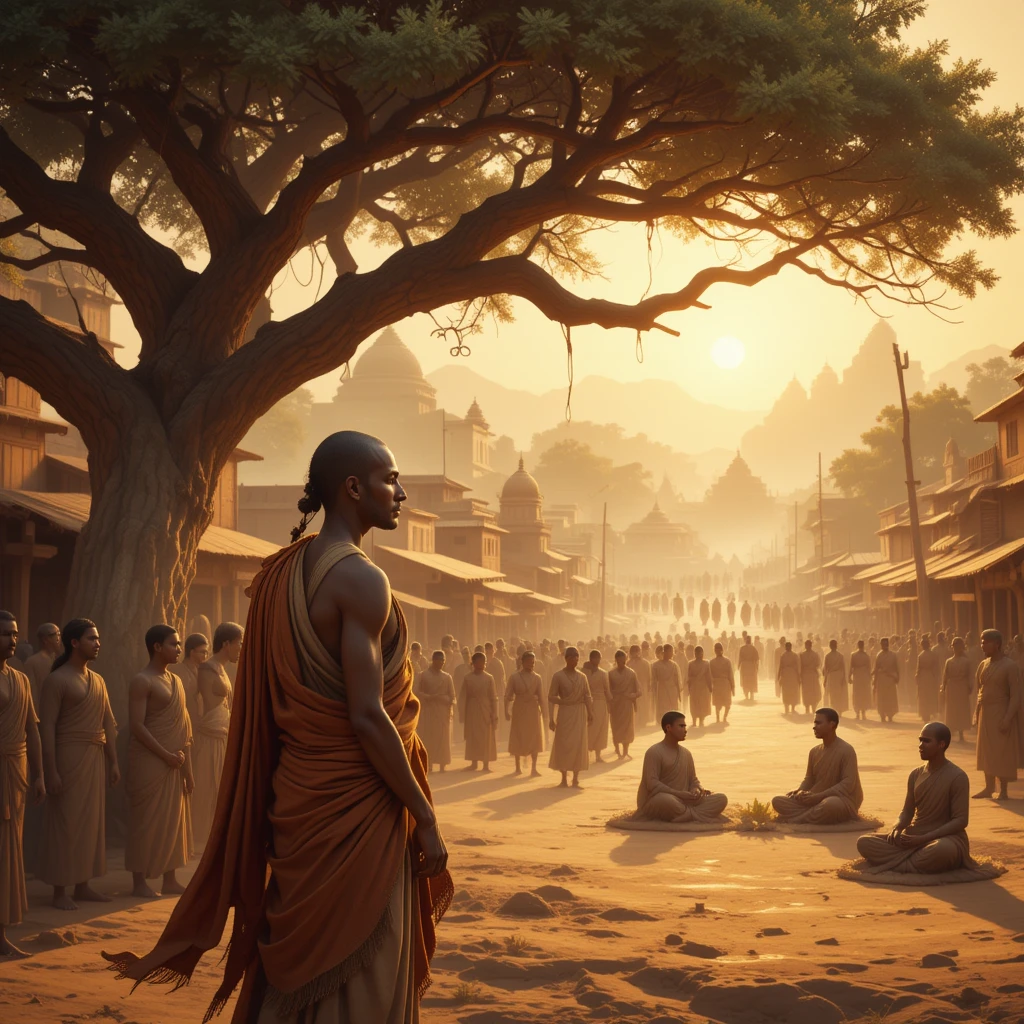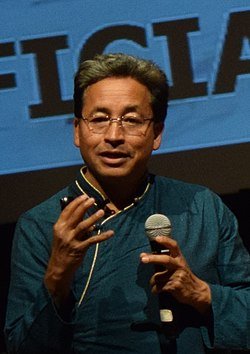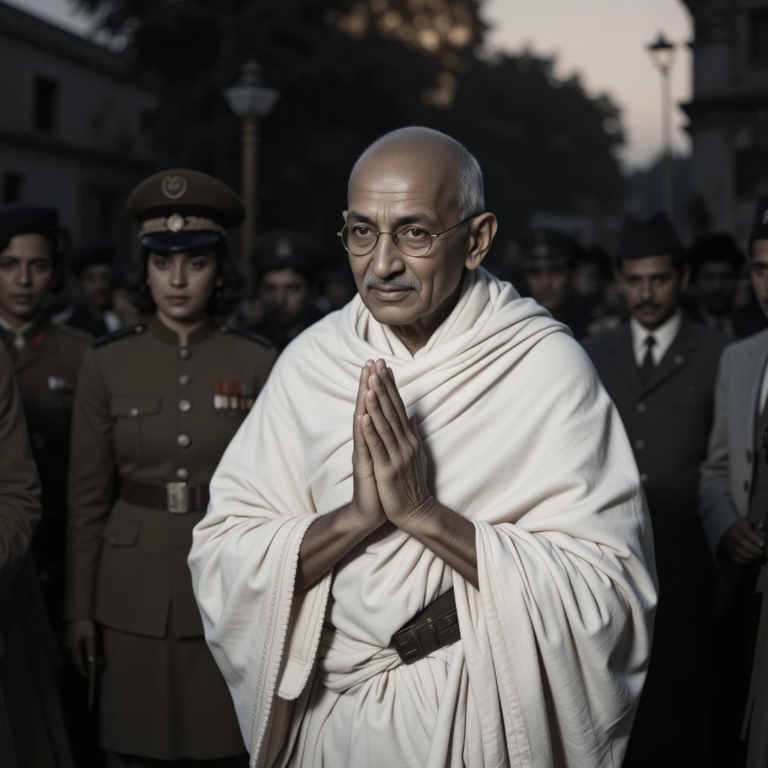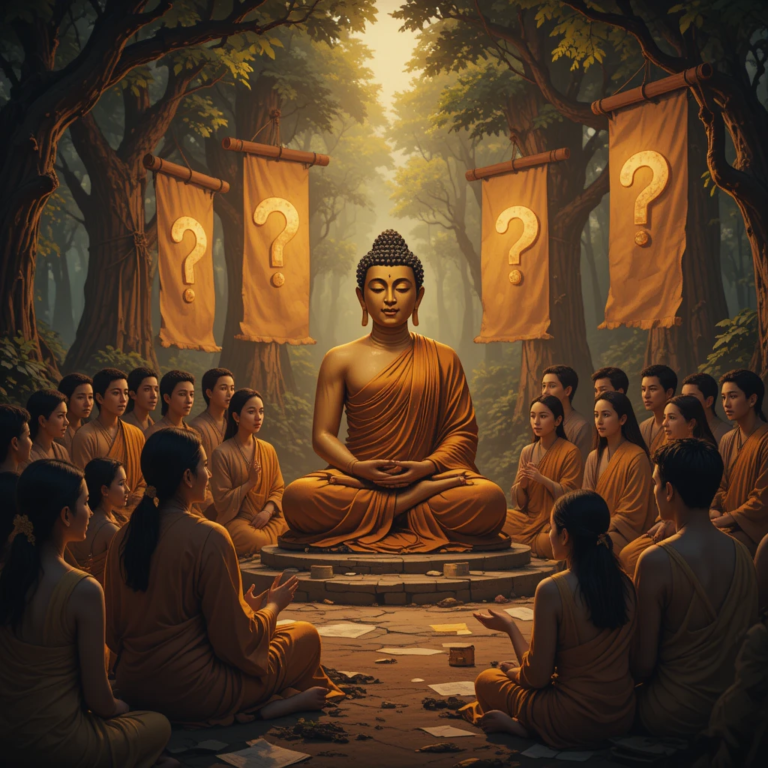The Seeds of a Movement: A Time of Transformation
The Ājīvikas took root during a dynamic era in India, roughly between 600 and 300 BCE, often dubbed the “Second Urbanization.” This was when states like Magadha and Kosala grew strong, trade flourished, and towns buzzed with activity. The Vedic tradition, with its priests and elaborate rituals, still dominated, but many sought alternatives. Alongside Buddhism and Jainism, the Ājīvikas offered a fresh voice, questioning caste and sacrifice in a way that stirred debate.

Table of Contents
Makkhali Gosāla, their founder, likely lived alongside Mahāvīra, the Jain leader, and Gautama Buddha. Jain accounts, such as the Bhagavati Sūtra, suggest Gosāla began as Mahāvīra’s disciple before breaking away, their rift ending with Gosāla’s death around 483 BCE, just before Buddha’s passing. This points to Magadha as their birthplace, a region known for its thinkers and lively discussions under ancient trees.
A.L. Basham’s History and Doctrines of the Ājīvikas: A Vanished Indian Religion (1951) lays out their early story with care. He proposes they may have evolved from earlier ascetic groups, citing figures like Purana Kassapa and Pakudha Kaccāyana from the Sāmañña-phala Sutta in the Pali Canon. These men, though not Ājīvikas, shared a rejection of worldly influence, hinting at a common Śramaṇa heritage. Basham also notes cave inscriptions and Ashoka’s edicts, which show the Ājīvikas active in the Barabar Hills during the Mauryan period (3rd century BCE).
Beni Madhab Barua’s The Ājīvikas (1920) adds texture with textual evidence. He draws from the Pāli Canon and Jātaka tales, where Ājīvika ascetics appear among other wanderers. He also highlights the Kharavela Inscription from Odisha’s Udayagiri caves (1st century BCE), which records King Kharavela’s support for the sect, proving their influence post-Maurya.
Piotr Balcerowicz’s Early Asceticism in India: Ājīvikism and Jainism (2016) offers a broader view. He argues the Ājīvikas were shaped by their rivalry with Jainism, especially in ascetic practices, citing the Ācārāṅga Sūtra and Sūyagaḍa, which critique their beliefs. He also suggests their ideas might have influenced later philosophies, a possibility supported by their persistence into medieval times.
The Heart of Their Faith: A Universe of Fate
The Ājīvikas stood out with their belief in Niyati—fate as an unyielding force. While Buddhists and Jains encouraged effort and virtue, the Ājīvikas insisted everything was predestined. A baby’s birth, a king’s war, a leaf’s fall—all followed a cosmic script beyond human or divine control.
Basham, drawing from the Sāmañña-phala Sutta, quotes Gosāla saying each soul endures 8.4 million great aeons of rebirths before liberation, a fixed journey with no deviations. The Bhagavati Sūtra adds that even the smallest event bends to Niyati. Basham suggests this appealed to a society facing urban upheaval and conflict, offering a sense of order amid chaos.
Barua explores the metaphysics in The Ājīvikas, likening Niyati to the Svabhāva (intrinsic nature) of later materialists. He references a verse from the Niyati-dvātriṃśikā, preserved in Jain texts, claiming the universe runs by its own rules. This rejection of Vedic gods marked them as outsiders to orthodox priests.

Balcerowicz, however, questions their originality in Early Asceticism in India. He suggests their ideas may have grown from debates with Jains and Buddhists, pointing to the Tattvārtha Sūtra and Uttarādhyayana Sūtra, which depict Ājīvika-Jain clashes. The lack of their own writings—only rivals’ accounts remain—leaves some doubt about the full truth.
Their cosmology was equally striking. Basham notes Pakudha Kaccāyana, linked to the Ājīvikas in the Pāli Canon, who saw the world as made of eternal atoms—earth, water, fire, air, pleasure, pain, and soul—unaffected by action. Unlike Jain or Vaiśeṣika theories with causation, the Ājīvikas saw these as static, ruled by Niyati. It’s a view that echoes modern science in an uncanny way.
Their practices reflected this. Ājīvika monks went naked and endured extreme austerities, believing it aligned them with fate. The Jātaka tales describe fasting and sun exposure, harsher than Jain sallekhanā. Barua notes this wasn’t about earning liberation but fulfilling a predestined role—a key distinction.
Building a Community: Spread and Structure
The Ājīvikas weren’t just lone wanderers; they formed a community. Gosāla led initially, succeeded by Kisa Saṅkicca and Nanda Vaccha, as the Majjhima Nikāya records. Basham describes a hierarchy with ekadandins (single-staff ascetics) and naked monks, showing organization. Ashoka’s Seventh Pillar Edict (circa 250 BCE) lists them among supported groups, reflecting Mauryan favor, though this waned after his Buddhist turn.
They spread beyond Magadha to South India and the Deccan. The Tamil epic Manimēkalai (3rd century CE) shows them debating with Buddhists and Jains, while Balcerowicz cites Satavahana inscriptions (1st–2nd century CE) from Andhra Pradesh noting monastery donations. The Hathigumpha Inscription under Kharavela in Odisha suggests a revival.
Yet, they remained a minority. Their fatalism offered little for social change, unlike Buddhism or Jainism. Barua suggests their oral tradition, lacking written texts, may have hastened their decline, leaving their legacy to others’ records.
The Slow Fade: Decline and Disappearance
The Ājīvikas’ decline began post-Maurya. Ashoka’s Buddhist shift and the Gupta revival of Hinduism (4th–6th century CE) marginalized them. Basham argues their inflexibility and lack of theistic appeal hurt them. Jain texts like the Kalpasūtra and Āvaśyaka Sūtra (5th century CE) portray them as fading, merging into other groups.
The Barabar Caves, gifted by Ashoka, show abandonment by the 2nd century CE, with Buddhist use later. Balcerowicz speculates their atomism and fate ideas influenced medieval philosophy, like the Nyāya-sūtra, but evidence is thin.
By the 14th century, they vanished. The Madurai Temple Inscriptions (13th–14th century CE) note a few ascetics receiving alms in Tamil Nadu, a final trace. Persecution, assimilation, and lost patronage likely ended them.
Reflecting on Their Legacy
Piecing together the Ājīvikas’ story feels like chasing shadows. Buddhist and Jain texts often cast them as oddities, a bias Basham accepts, though Balcerowicz urges caution. Without their own manuscripts—unlike the Pali or Prakrit canons—we wonder if their works were lost or never existed.
Their ideas still provoke. Fate versus free will challenges modern thinking, while their caste rejection aligns with today’s equality struggles. Their atomism hints at scientific insight. As I read Basham, Barua, and Balcerowicz this afternoon, I find their tale invites us to ponder life’s deeper questions.
Closing Thoughts: Echoes of a Lost Path
The Ājīvikas may be gone, but their echo lingers in India’s rich past. Thanks to Basham, Barua, and Balcerowicz, we glimpse a group that saw the world through Niyati’s lens. Evidence from Ashoka’s edicts, Kharavela’s inscription, and texts like the Sāmañña-phala Sūtra keeps their story alive. As we uncover more, they remind us of ancient India’s diversity and the timeless quest to understand our place in the universe—questions as relevant now, on this June evening in 2025, as they were millennia ago.




